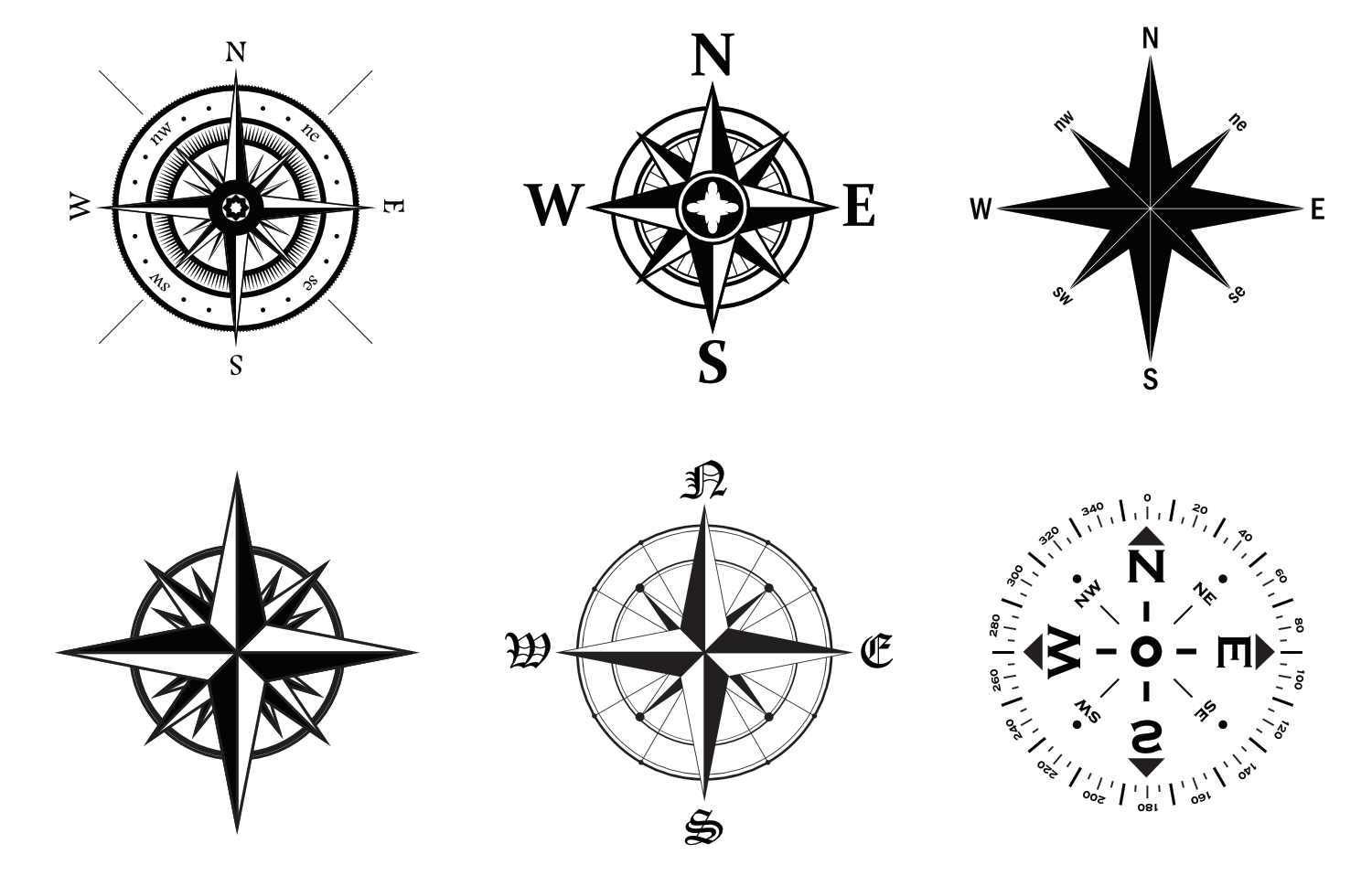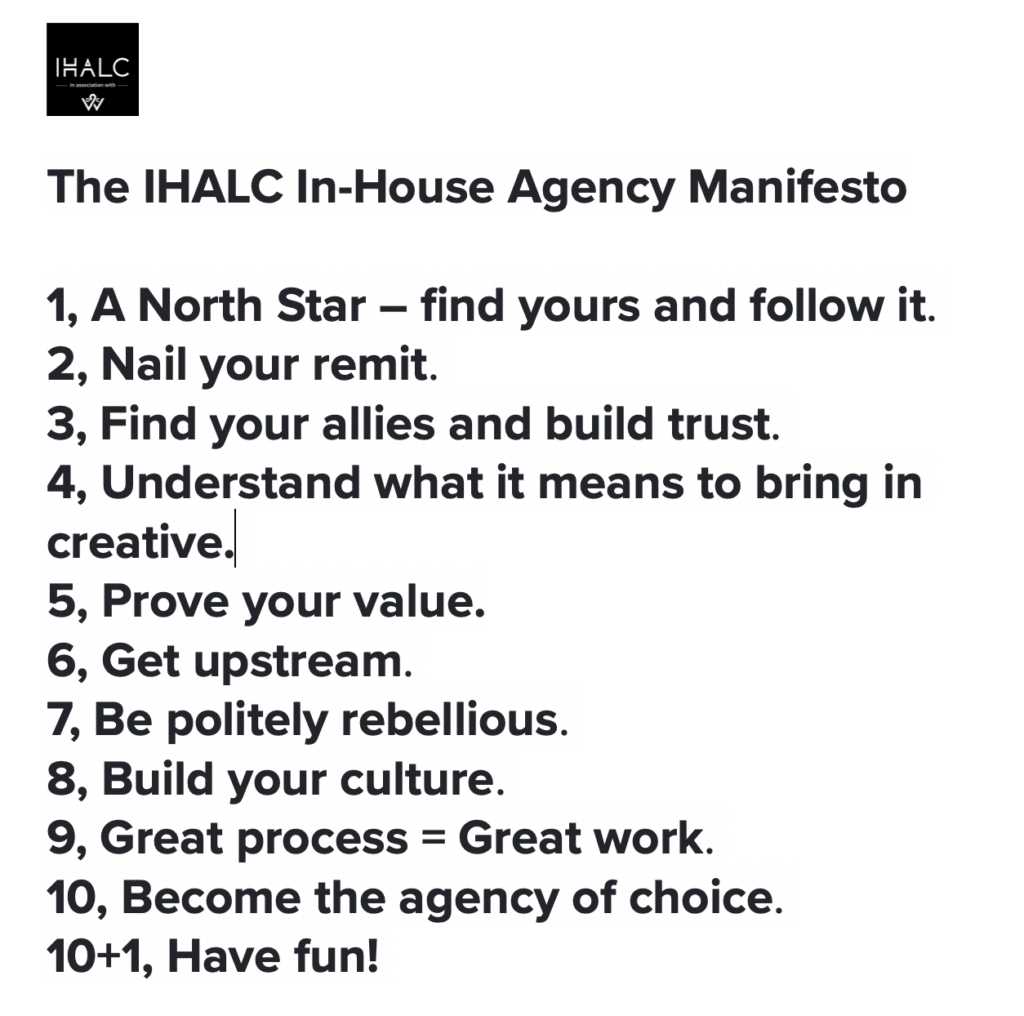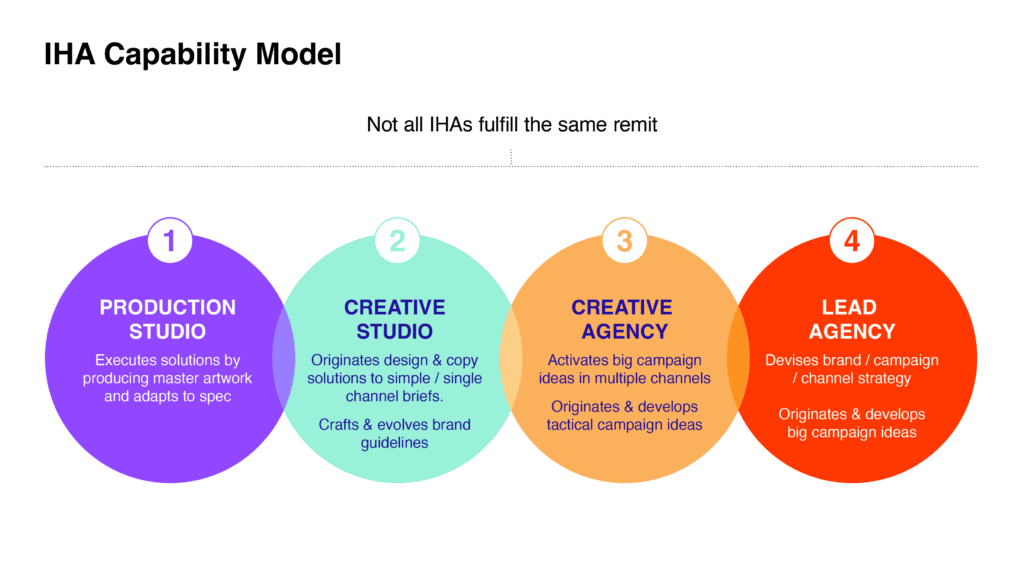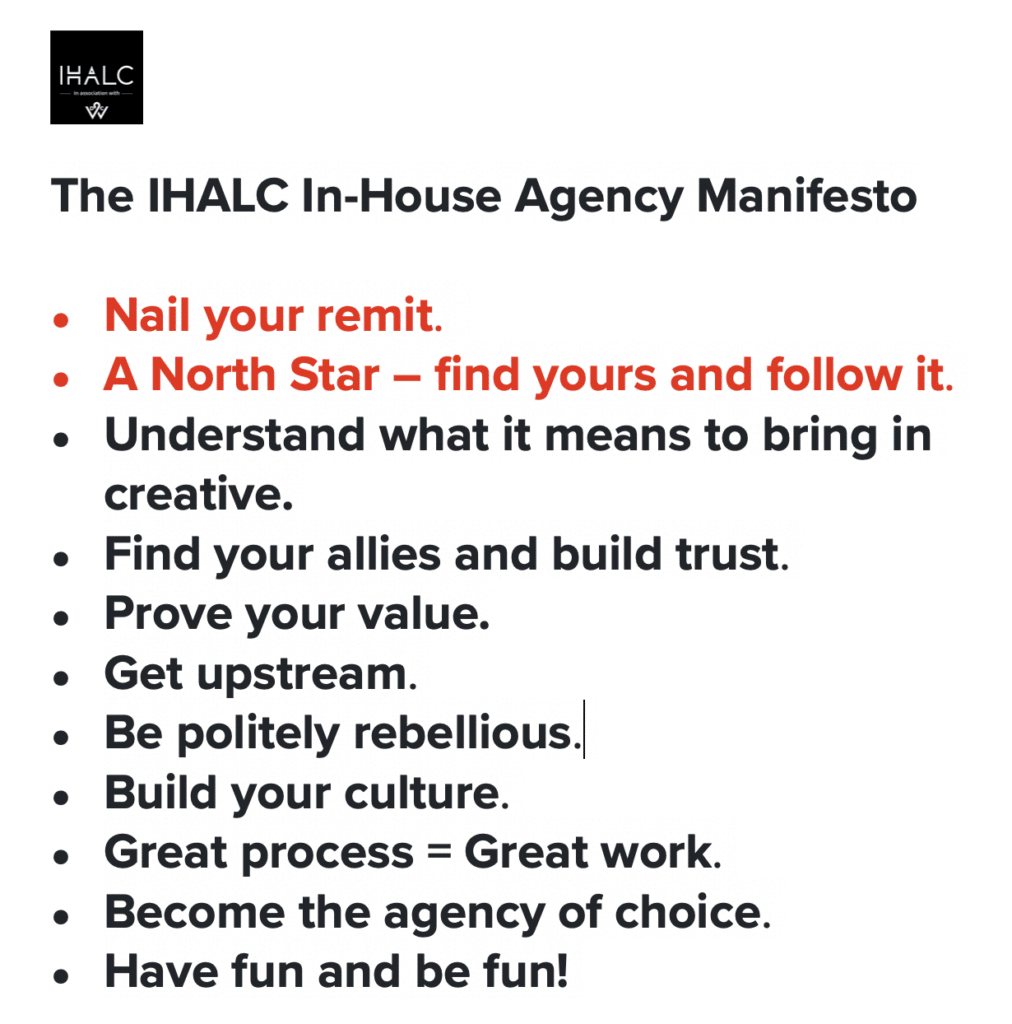An IHA Manifesto: North Stars and Remits

What are the principles for success at an in-house agency? The foundations that will enable you to thrive?
At Campaign’s In-Housing Summit in October, with the help of a panel of in-house leaders, we set out to draw up an In-House Agency Manifesto live on stage. We put together ten (plus one!) points to guide anyone starting or running an IHA– a great first attempt, but more work was needed.
So, for our latest In-House Life session we wanted to build on this first draft. What did we miss out? Did we get the sequence wrong? Could we combine some of our points or refine them?
Two of our original panellists – Arabella Gilchrist, who set up Camelot’s Creative Hub, and Natalie Brewster, Director of Global Creative Operations at The Body Shop, joined Three Creative Director Mat O’Brien and WDC partner John Owento refine our work so far and land on an In-House Agency Manifesto (version 2.0). (Thanks also to Nick Burbidge of Deloitte who was on the original panel.)
Over the next few newsletters I’m going to be exploring some of the key points from our session (you can access a recording of the whole thing here).

We begin at the top with a debate on North Stars and Remits. Our original Manifesto (shown above) suggested that any IHA needs to start by finding a North Star and following it. It’s so important for everyone in an IHA to create a unifying purpose and objective that, used well, gets everybody aligned and collaborating toward it. But is there a risk in doing that before you have a clearly defined remit agreed? Which should come first?
John Owen warned that over-ambitious North Stars that are not aligned with an IHA’s remit can lead to problems. If you ask teams what kind of work they aspire to make, naturally they will want to be ambitious and to make work as good as that coming from any big agency. But if your remit is just to deliver on something equally valid but more prosaic, there are going to be some disillusioned people. “It’s really important to remind ourselves that any in-house agency is operating in service to the business,” John said. “The first step should be to understand what the business needs from that agency. What is the remit? What type of outputs are we going to be producing, and why? And that should then lead to a more realistic North Star.”
But there is still a place for ambition, or at least to be aspirational, Arabella argued. “You need to give people a reason to turn up every day, to think ‘I want to keep pushing myself to try and achieve that’. So for me, the North Star is about inspiring your people, and giving you something to then sell to your key stakeholders as an ambition and get them to buy into it as well. It’s about scale of ambition over time.”
So a North Star can be something to work towards – as long as that is clearly communicated to avoid disappointment. It can also vary according to who you are talking to.
Mat O’Brien is CD at Three’s in-house agency, Generation. He believes that it’s possible to have a “different North Star per stakeholder group, according to where you are in your life stage as an in-house agency”.
Three’s in-house agency was set up 18 months ago, building on what was originally the Three Studio, “sort of a classic in-house production studio,” as Mat described it. Like many IHAs, Three was negotiating the tricky progression of capabilities outlined in the Maturity Model graphic developed by WDC (shown below) which we have featured in earlier posts. That model suggests that there are essentially four types of IHA, progressing from a Production Studio executing solutions by producing master artwork and adapting it to specification, to a Creative Studio (which originates design and copy to simple and/or single channel briefs), to a Creative Agency capable of activating big campaign ideas in multiple channels, through to a Lead Agency which originates and develops big campaign ideas.

“What we’ve had to do is do a merry dance between one, two, and three,” Mat told us. “We will always be doing those production studio-type jobs because Three is a massive retail business. But to create the ideas for that, we need to feed that third circle on the chart. So we had a North Star that was more of an articulation of our proposition rather than our mission – ‘created for the connected age’. It was basically a statement of intent that we were here to connect the dots between our partners, our stakeholders, our partner agencies, and every link on the journey as well. That became something that was easy to articulate amongst the teams, but wasn’t too ambitious. And then we’re setting yearly, or even quarterly, North Stars, I suppose – milestones for how we get more established in that third circle. And we’ve done that by analysing the terrain for each stakeholder and building strategies around that. So I think our remit and our North Star entwine. And your North Star and remit could change depending on which stakeholder group or which area that business you’re trying to penetrate.”
Natalie’s challenges at The Body Shop have been slightly different as the company has operated some form of hybrid in-house “agency, slash studio for 30 plus years”. “We actually wrote a bit of a North Star, aiming to be highly ambitious. And then we went to WDC, and worked very closely with John and realised that we needed to figure out what our remit was.”
Nevertheless, having that North Star – encapsulated in the project name of Good to Great – helped rally the team as it refined its remit, the two working in tandem. So not one, or the other, but both, working together.
Which ever way you do it, getting teams and stakeholders to buy in is crucial, as Arabella explained. “I spent a lot of time going around making the case for an in-house agency and explaining the benefit to the different stakeholders,” she said of her time at Camelot. “But you’ve got to start with your team. I wrote a manifesto but, actually, they kept the North Star, ripped up quite a lot of the rest of it and rewrote it themselves, which actually was better, because then then it was theirs, not mine. I’d set the direction, but they really then developed and bought into the manifesto themselves. So I think it’s a continuous process, you have to understand how to motivate your team and get them to then become ambassadors. And then you’ve got to get out with it to all your key stakeholders – and then got to do it again. It’s a bit like painting the Forth Bridge – you get to the end, then start again. You’ve got to keep educating and talking about it, because it’s alive, it never stops.”

So in our updated version of the manifesto (above), we’ve done away with the numbering so as not to be too prescriptive in our sequencing. North Star and remit still retain their position at the top, but on the understanding that prioritising one over the other may vary according to need and audience. But both need constant attention and proselytising.
Next time we’ll explore the importance of finding allies and building trust, and how that allows IHAs to prove their value and move upstream toward higher value work.
